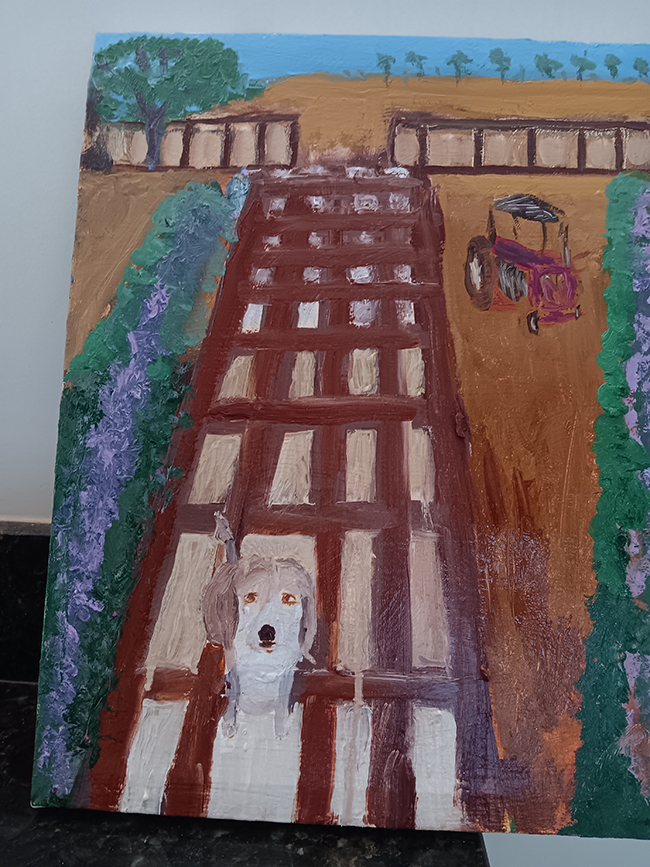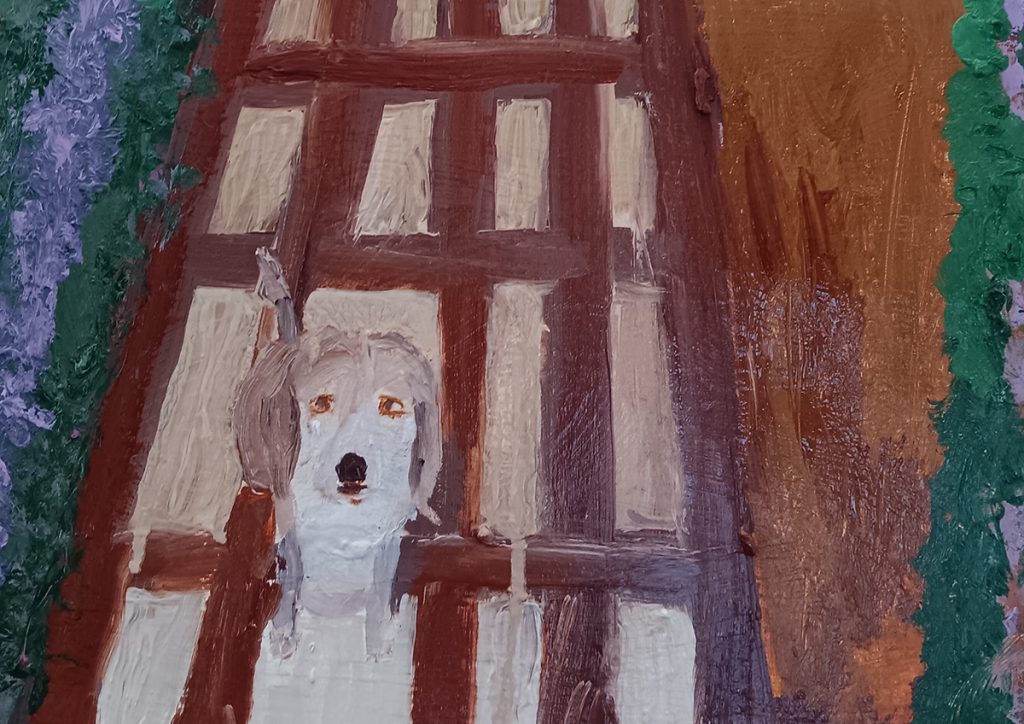Martin Collier, who also works under the name Marcol from ArtistAffect, is an artist who digs deep into the roots of his craft. His practice doesn’t stop at painting—he takes it further by questioning the very materials that make his art possible. Paint, for Collier, isn’t just a tool; it’s a living element of the work. When a supplier failed to deliver clear answers about his pigment order, he decided to start from scratch and make his own oil paints. That bold step reflects more than frustration—it reveals a fundamental drive to connect with art at every level. To Collier, it’s not enough to use what is available. He wants to understand, shape, and control the foundation of his process. That same spirit shows in his paintings, where curiosity, persistence, and a personal touch drive each piece into being.

Billy’s Run: A Study in Place and Motion
Billy’s Run is rooted in something simple yet personal: the driveway at his sister-in-law’s house, where a beagle named Billy loves to run. On the surface, it’s a scene of a dog sprinting across familiar ground. But Collier doesn’t just record the image; he folds in layers of place, memory, and experimentation, building a piece that reflects both lived experience and artistic growth.
The work ties together multiple strands of Collier’s life. The driveway and the beagle belong to family. The tractor placed in the background is a tool from the farm in Capapolis, Brazil—a place Collier knows well, both for its agricultural rhythm and for the personal reality of visiting there during his ongoing dental treatments. The painting is also tied to his mother’s house in the same Brazilian town. Together, these details root the work not only in visual reality but in a patchwork of personal spaces, routines, and connections.
Brazil as a Well of Ideas
Collier admits that Brazil keeps giving him ideas. Each visit adds to his array of paintings, feeding him fresh perspectives. Billy’s Run is one piece in a growing series that reflects not just the physical landscapes of Brazil but the personal ones: family ties, everyday work, and the small joys of animals moving through those spaces. It’s less about grand scenes and more about a grounded, lived-in experience. By painting what he sees there, Collier builds a bridge between art and personal geography.
Process Over Perfection
One of the most telling aspects of Billy’s Run is how Collier approached its making. He drew on advice from Mark Carder, the artist behind Draw Mix Paint, who encourages filling the canvas with paint and only later stepping back to solve problems. Collier took that advice to heart. Instead of fussing over each detail from the beginning, he worked the surface boldly, applying color and form without hesitation. Only after the canvas was alive with paint did he refine and adjust. The result carries energy—an honesty of process that is visible in the finished work.
This method mirrors Collier’s larger relationship with painting. Just as he decided to make his own pigments when suppliers left him unsatisfied, he values directness and independence in the act of painting itself. His process is less about achieving perfection in each moment and more about building something living, something that reveals itself over time.
A Tangle of Motifs
Looking at Billy’s Run, what stands out is not just the dog but the combination of elements: the tractor, the driveway, the Brazilian farm, and the emotional thread of family. These motifs work together like overlapping memories. They may not belong to one neat narrative, but they belong to Collier’s lived world. In combining them, he creates an image that is both personal and universal. Anyone who has watched a dog sprint joyfully across familiar ground can connect to it, yet the painting is uniquely Collier’s, bound to his geography and his story.
A Canvas Full of Life
At its core, Billy’s Run is about motion and presence. The dog’s run captures speed and freedom. The tractor anchors the scene in labor and routine. The farm and family house tie the work to a larger sense of belonging. Collier’s brushwork and willingness to “fill the canvas and fix later” give the piece an immediacy—it feels lived in, as though it carries the dust of the driveway and the echo of paws hitting the ground.
Where Craft Meets Curiosity
What makes Collier’s art compelling is that it is never just about what meets the eye. Behind each piece lies a restless curiosity—about paint, about process, about the lives and places that spark ideas. Billy’s Run is more than a snapshot of a dog running. It is a reflection of Collier’s ongoing dialogue with materials, place, and family. He doesn’t just paint; he wrestles with what it means to make, to experiment, and to stay present with the work until it reveals itself.

